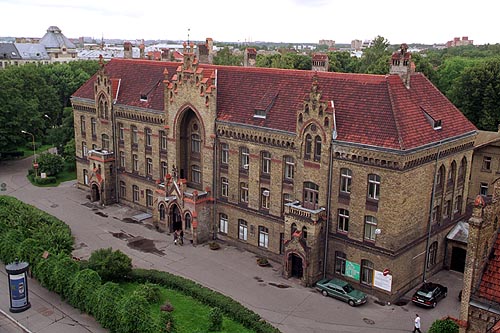If you reside in Latvia, then you know all too well that our health care system is in its death throes. Everyone understands the gravity of the situation: not just the patients or the doctors themselves, but the politicians as well. How did our health care system end up like this? And most importantly, when did things begin to go horribly wrong?
Let us wind the clock back to the year 1991. Latvia was hastily transformed into a capitalist state, and the end goal of any capitalist society is making profit. The means and ways of achieving this goal can be anything. If treating people is profitable, we’ll treat them. If it is profitable to harm them, we’ll harm them instead.
The health care system cannot avoid the influence of this all-encompassing race for profit. Closures of hospitals and clinics, various “optimizations” which is a politician’s word for mass layoffs and tremendous workload increase for the remaining workers. They toil for a laughably low salary which doesn’t match the tremendous physical and psychological stress that they have to endure. Yet they continue to serve the people, despite all these difficulties.

provide free ambulatory care, neither it accepts ambulance cars.
Latvia is a bourgeois state. As a collective capitalist, its primary objective will always be the same: extracting as much profit as possible by ruthlessly exploiting the workers of any industry (including the health care industry).
But hospitals by themselves do not constitute health care. It is a complex system that also includes the preparation of new cadres on all levels. This means that a government-funded program is needed that would provide ample employment for young graduates and guarantee a fair salary. Does Latvia have such a program in place? Do health care professionals feel that this country needs them? These are just rhetorical questions.
Ordinary people, too, suffer at the hands of this system but in a different way. They enjoy all the “benefits” brought to them by capitalism: ridiculously expensive care, increasing wait times (which in some cases can reach 8 months, even for emergency treatments), closures of “unprofitable” facilities etc. The situation just keeps getting worse, and it seems that there is no light at the end of the tunnel. The bourgeois government makes no attempt to salvage the situation and save the Latvian health care system from complete collapse.
“Only death can cure the sick!”
is perhaps our health care system’s motto.
Meanwhile, the ruling class and their lap dogs in the parliament and in the government can afford premium health care, at any time, in any place at our expense. If we do not acknowledge the nature of these events, if all workers do not unite to achieve their objective goals, we will simply remain as the source of income for the capital and its cronies.
